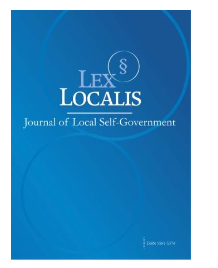DIGITAL ADVERTISING STRATEGIES FOR SUSTAINABLE BRANDS: A COMPARATIVE ANALYSIS OF SOCIAL MEDIA AND E-COMMERCE PLATFORMS
DOI:
https://doi.org/10.52152/exqtzc80Keywords:
Sustainable brands, digital advertising, social media marketing, e-commerce marketing, eco-friendly products, online marketplacesAbstract
Purpose: This study reviews the effectiveness of digital advertising strategies employed by sustainable brands on social media and e-conventional channels to develop a comparative framework for brand awareness, consumer engagement, and optimized conversions concerning eco-conscious consumers.
Design/methodology/approach: A mixed method approach consisted of ten sustainable brands (both national and international), analytic case studies, and structured consumer surveys (n=200, aged 20-35 years). Data were collected using advertising performance analytics, narrative visualization analysis from Matplotib, and a Likert Scale on social media channels (Facebook, Instagram, LinkedIn, TikTok) and e-conventional channels (Amazon, Flipkart, Shopify). The digital strategies studied included influencer marketing, AI-targeted advertising, engagement, eco-narratives, SEO, and social media marketing.
Findings: The analysis found that influencer marketing was a driver of both brand awareness and commitment to purchase, and e-conventional channels produced a better rate of conversion due to the ease of purchasing and consumer trust evidence. Influencer marketing, targeted advertising and eco-storytelling presented the most successful strategies in quantitative analysis. Social media channels were the best at generating awareness alongside communities of engagement, on otherside e-commerce channels were better at generating transactional conversion rate. The study concluded with the proposal of an Integrated Digital Promotion Model that refers to coordinated social media and e-conventional platforms.
Research limitations/implications: Research limitations in terms of geography, Indian and Western markets for cross-cultural generalizability, and the research findings limit the generalization of findings but provide action as a toolbox and frameworks for sustainable brands to more effectively allocate digital marketing resources. The integrated model allows for the development of strategic objectives for each platform, with the goal of maximizing return on investment (ROI), while maintaining the authenticity of the sustainability agenda and providing support primarily to small-to-medium-sized enterprises (SMEs). Improved communication efficiency is positively associated with increased intentions to adapt for eco-friendly products that contribute to sustainable consumption transitions.
Originality/value: This study research addresses several important gaps in the sustainability marketing literature, offering the first comprehensive approach to examining digital advertising effectiveness across two platforms for sustainable brands. This study also provides innovative theoretical frameworks and practical implementation models for sustainable brands to better optimize their digital marketing strategies and approaches.
Downloads
Published
Issue
Section
License
Copyright (c) 2025 Lex localis - Journal of Local Self-Government

This work is licensed under a Creative Commons Attribution-NonCommercial-NoDerivatives 4.0 International License.








